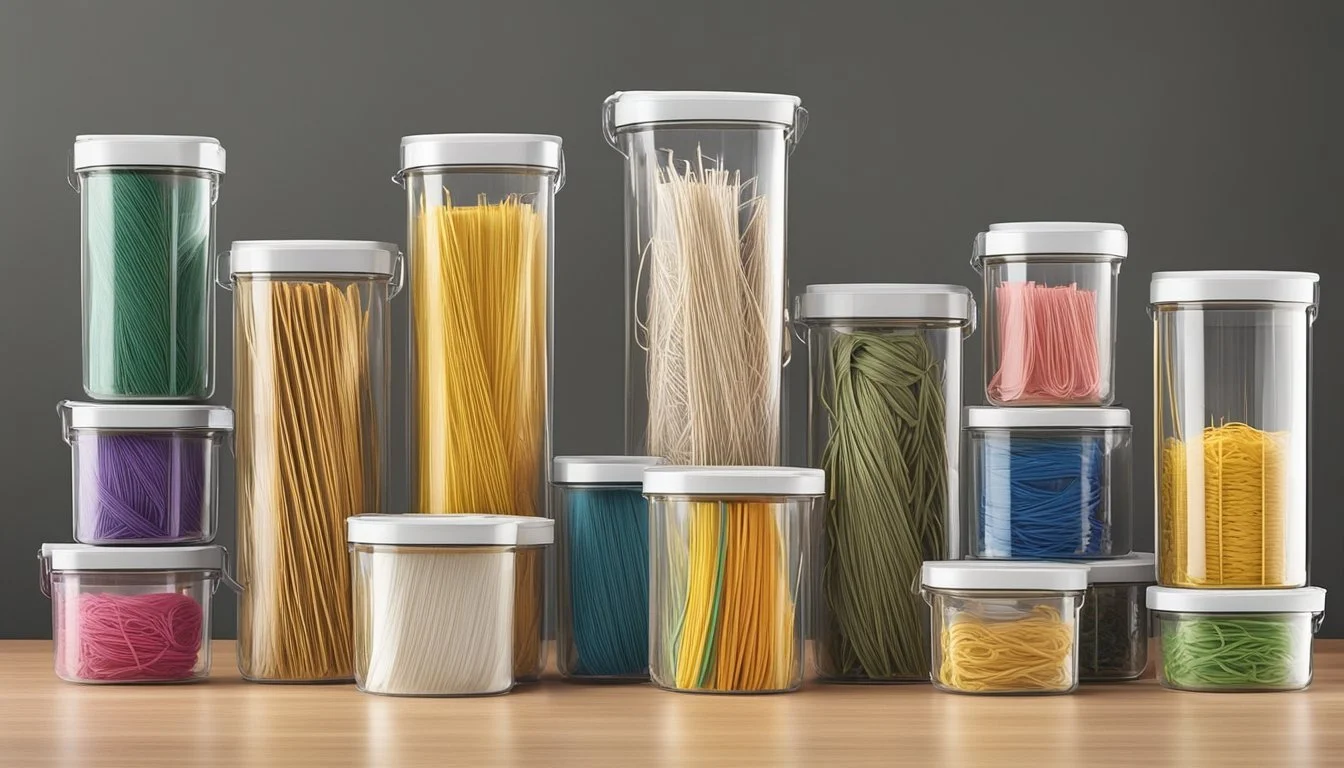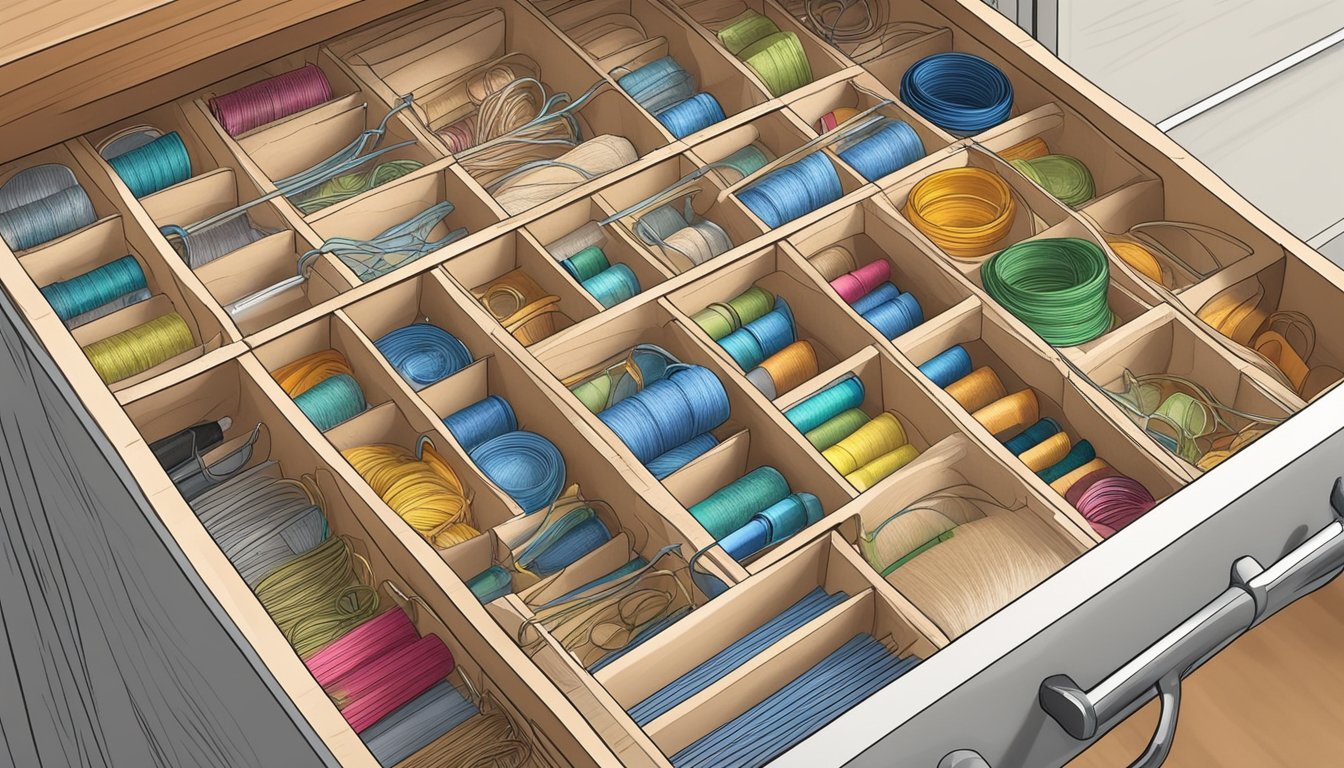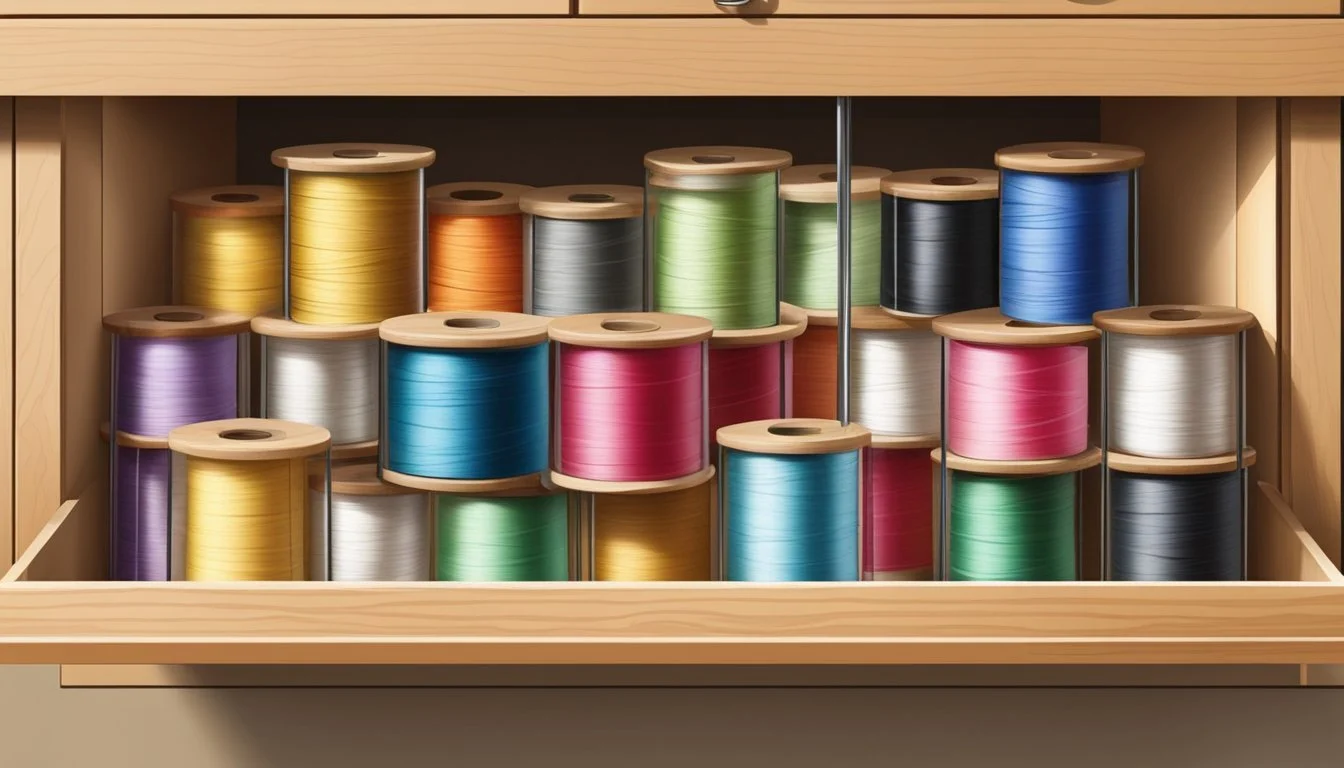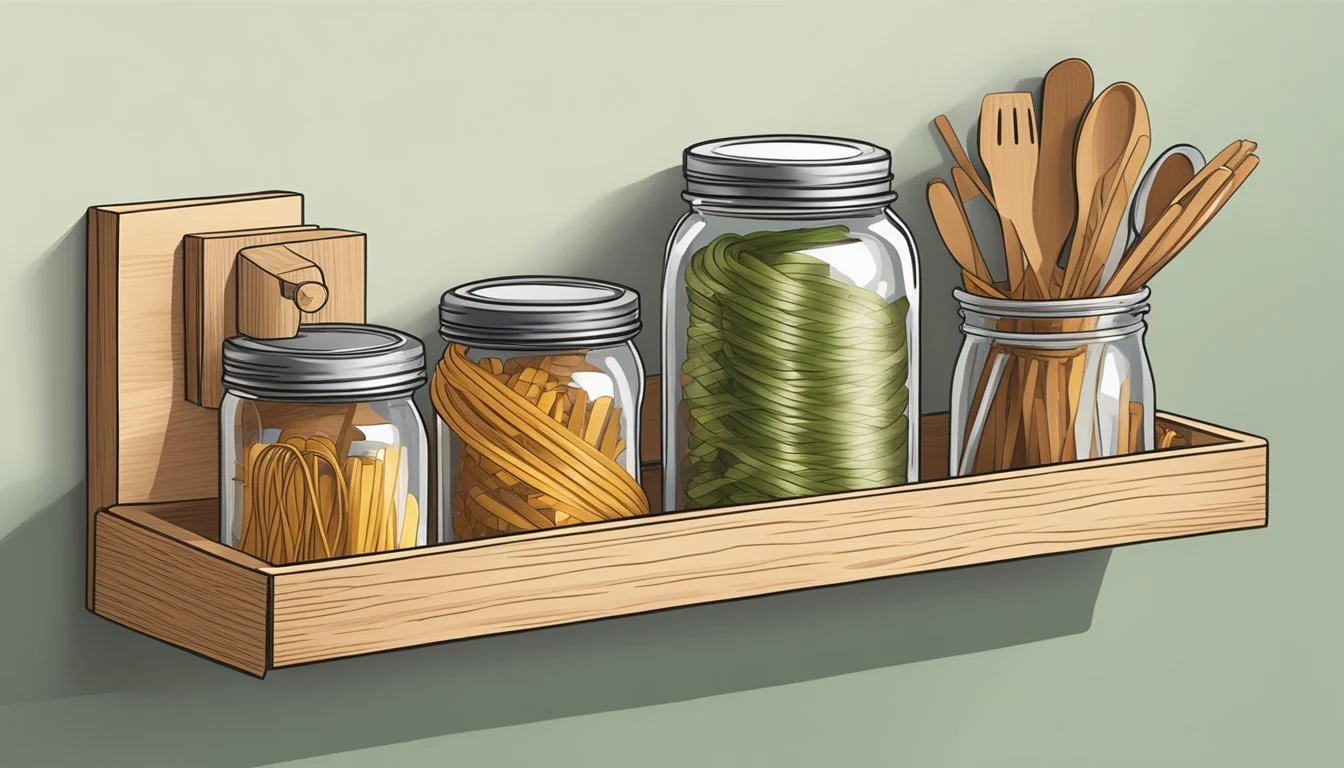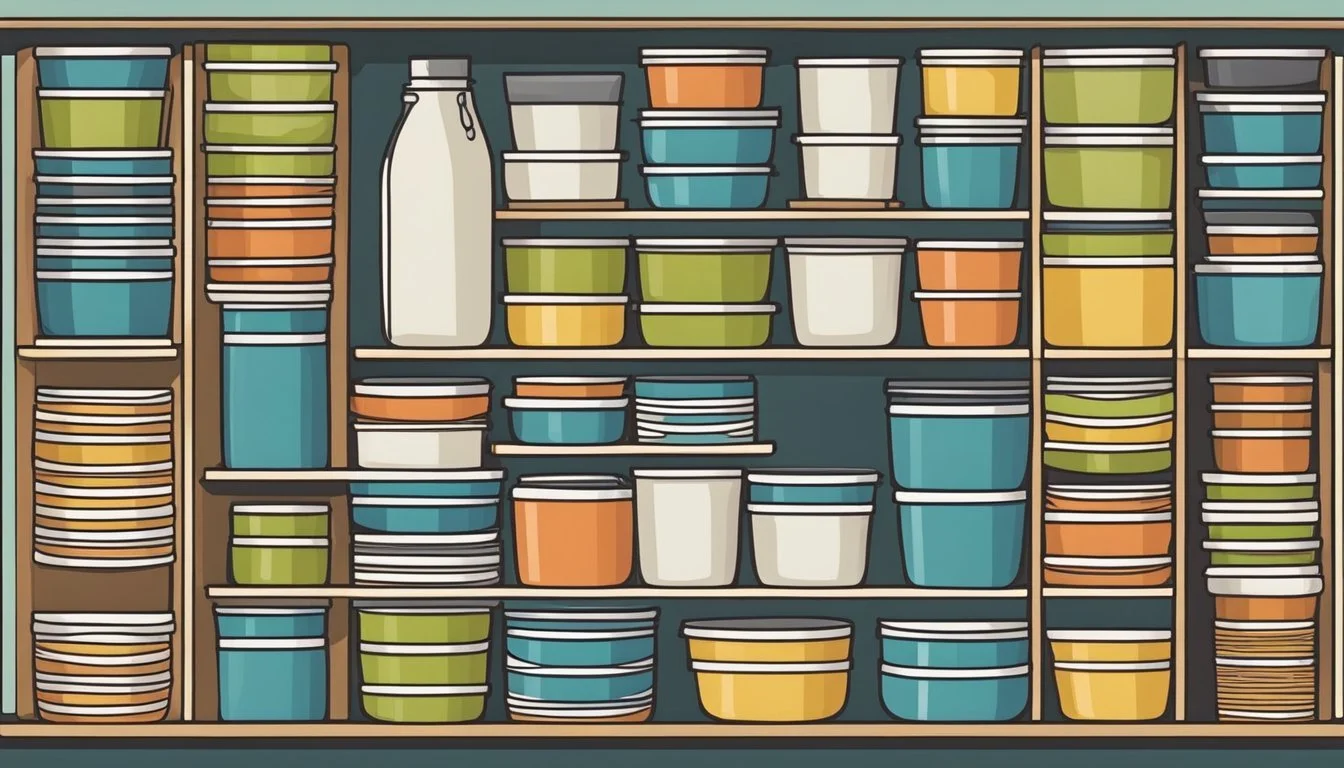10 Clever Ways to Store Your Kitchen Twine and Rubber Bands
Simple Organizational Hacks
Every kitchen enthusiast knows that organization is the key to efficiency. Twine and rubber bands are among the unsung heroes of a well-kept kitchen, serving purposes from bundling herbs to securing storage. However, these small items can easily become a tangled mess if not stored properly. Intelligent storage solutions for these versatile tools not only keep the kitchen tidy but also extend the life of these essentials, ensuring they are ready at hand whenever needed.
For kitchen twine, a clear and easily accessible place prevents it from becoming knotted and unusable. Short of investing in specialized holders, repurposing common household items like a sugar dispenser allows one to pull out lengths of twine neatly and with minimal fuss. In contrast, rubber bands thrive in environments where they are protected from the heat and light that can cause them to degrade. A simple yet effective method is to store them in a drawer, using compartments to separate sizes or colors for ease of identification.
When it comes to both twine and rubber bands, the goal is a balance of accessibility and preservation. Whether using a dedicated storage system or opting for creative, DIY methods that repurpose everyday items, the right approach to storing these kitchen aids can make all the difference in maintaining an orderly and functional cooking space.
Understanding Your Storage Needs
When considering how to store kitchen twine and rubber bands, it is essential to assess one's storage needs. The primary goal is to maintain an organized kitchen where these items are easily accessible, yet out of the way.
Space Utilization: One should first evaluate the space they have available. Are there drawers that can be allocated for these small items, or should one consider wall-mounted options to save counter space?
Frequency of Use: How often they use kitchen twine and rubber bands will dictate their placement. Regularly used items should be within arm's reach, perhaps in a small container on the countertop or hung on hooks inside cabinet doors.
Accessibility: Keep these items at a convenient location where they can be grabbed quickly without disrupting other activities in the kitchen.
Visibility: Being able to see what you have at a glance prevents overbuying and underusing. This is where clear containers or labeled compartments come in handy.
Protection: Kitchen twine and rubber bands must be kept clean and dry. Ensure that the storage solution shields them from kitchen grime and moisture.
Here is a quick reference table for assessing kitchen twine and rubber band storage needs:
Factor Consideration Space Drawer, Counter, Wall-mounted, Inside cabinet doors Use Frequency Daily, Weekly, Occasionally Accessibility Reach without moving other items Visibility Clear view to prevent excess Protection Must be clean, organized, and dry
By addressing these considerations, individuals can create a tailored storage solution that maintains order and efficiency in the kitchen.
Segregating Items by Use and Frequency
Storing kitchen twine and rubber bands effectively hinges on the ease of access and the frequency of their use. Assigning areas in the kitchen where one can quickly reach for what is needed enhances efficiency and organization.
Everyday Items
For rubber bands and kitchen twine that one uses daily, keeping them in a small jar on the countertop saves time. This jar should be clear or labeled for ease of identification and within arm's reach, such as by the kitchen's prep area.
Location: Countertop Jar
Visibility: Clear or Labeled
Accessibility: Arm's Reach
Occasional Use
Rubber bands and twine needed for tasks like securing bags or bundling utensils for special occasions warrant a designated drawer or cupboard space. Segregating these by use in separate labeled jars or compartments helps maintain order and prevents the need to search through a jumbled mix when the time comes.
Storage Unit: Drawer / Cupboard
Organization: Labeled Containers
Rarely Used
Specialty twine or infrequently used rubber bands should be placed in a more out-of-the-way location. It's prudent to group these items in clearly marked containers, away from the everyday hustle, like a high shelf or a storage box inside a closet. This preserves the twine and rubber bands from damage and avoids clutter in more accessible areas.
Storage Spot: High Shelf / Closet Box
Condition: Clearly Marked, Less Accessible
Creative Storage Solutions
DIY Twine Dispensers:
She can repurpose an old sugar dispenser for an easy-to-access twine holder.
He can create a custom dispenser using a small box with notches to guide the twine.
Glass Jars: Clear glass jars allow quick identification of contents while keeping rubber bands tidy.
Hooks with Clips: Wall-mounted hooks with clip attachments can hold looped bundles of twine, making them easily retrievable.
Repurposed Office Items:
Paper Towel Holders: Utilize to stack spools of twine vertically for a neat display.
Binder Clips: Can be clipped to the edge of a shelf, serving as a makeshift holder for coiled twine or rubber bands.
Stylish Storage Bins:
Wicker baskets or decorative bins can shield twine and rubber bands from view while adding to the kitchen's style.
Label each bin for an added level of organization and aesthetic charm.
Magnetic Solutions:
Magnetic racks or strips installed inside cabinet doors can hold metallic clips with bundled twine or rubber bands.
This technique takes advantage of otherwise unused space, maximizing organization.
Together, these solutions blend clever ways of repurposing common items, do-it-yourself ingenuity, and an eye for style into a practical and efficient system for storing kitchen twine and rubber bands.
DIY Twine and Rubber Band Organizers
In any well-organized kitchen, keeping twine and rubber bands handy yet tangle-free is vital. This section will walk the reader through three DIY methods that optimize organization and accessibility.
Jar and Label System
The Jar and Label System is an efficient way to store rubber bands and kitchen twine. Individuals can repurpose clear jars—mason jars, for instance—making it easy to see the contents at a glance. The use of labels on each jar allows one to quickly find either twine or rubber bands without rummaging through drawers. This method not only keeps twine and rubber bands tidy but also adds a touch of rustic charm to kitchen décor.
Binder and Envelopes
The Binder and Envelopes approach is a clever vertical storage solution using readily available office supplies. One can take a standard binder and fill it with plastic envelopes; each envelope can hold a specific type of rubber band or twine. This system takes up minimal space and can be stored on a bookshelf or hung on the inside of a cabinet door. Organized by size or color, rubber bands and twine can be effortlessly located and removed as needed.
Muffin Tin Sorting
The Muffin Tin Sorting technique lets one creatively repurpose muffin tins as a sorting tray for rubber bands and twine. By designating each muffin hole to a particular size or color, they create a highly visual and compartmentalized storage system. This method is best used inside drawers or on shelves. Muffin tins can also be painted or labeled for an additional level of personalization and organization.
Utilizing Unused Kitchen Spaces
Optimizing kitchen storage necessitates creative use of overlooked areas. Effectively arranging twine and rubber bands can transform clutter into an organized system, enhancing both the functionality and aesthetics of one's kitchen.
Drawer Organizer Installations
A drawer organizer offers a designated space for both kitchen twine and rubber bands, ensuring they're neatly separated and easily accessible. By installing a versatile drawer divider, one can customize compartments to fit their specific storage needs. These organizers can be adjustable, providing flexibility as storage requirements change.
Vertical Space Maximization
Kitchens often have untapped potential in vertical spaces. For items like twine and rubber bands, simple hooks or pegboards installed on the inside of a pantry door or a blank wall can serve as an inventive storage solution. Alternatively, mounting a small shelving unit or using the sides of cabinets can free up valuable drawer and counter space.
Hidden Spot Innovations
Ingenious solutions, such as tension rods under the sink or magnetic strips on the backsplash, present clever ways to store kitchen essentials out of sight. These small modifications not only declutter surfaces but also make use of areas that typically go unnoticed. With such innovations, even the most inconspicuous spots can become prime real estate for organization.
Preparing for Specific Events
When special occasions arise, effective organization of kitchen supplies such as twine and rubber bands is essential for crafting holiday decorations and expediting the cooking process. They can turn ordinary items into festive pieces and ensure culinary tasks are handled with ease.
Holiday Decor Prep
During the holidays, kitchen twine transforms into a versatile decorating tool. She can use twine to string together homemade ornaments, creating garland that adds a rustic charm to her home. Twine is also ideal for attaching holiday cards to display or bundling cinnamon sticks for fragrant decor. For added festivity, she can incorporate colored twine or ribbon to match the holiday theme.
Examples:
Ornament garland: Tie twine through ornaments and hang them as a garland.
Card display: Stretch twine across a wall, and use small clips or rubber bands to attach holiday cards.
Cooking and Baking Readiness
Prior to culinary events, she ensures twine and rubber bands are at the ready for various recipes that require precision and binding. Twine is crucial when trussing poultry to ensure even cooking, or when rolling stuffed meats such as tenderloins. Rubber bands keep ingredients packages sealed and can be used to secure plastic wrap over dough that’s resting on the rolling pin.
Cooking Uses:
Poultry trussing: Use twine to tie legs and wings against the body.
Dough prep: Cover dough with plastic, secured with a rubber band, to prevent drying out.
Maintenance and Organization Habits
Proper maintenance and organization of kitchen twine and rubber bands ensure that these items are always where they should be and ready for use. Implementing routine checks and categorization practices can make a significant difference.
Routine Checks
Bi-weekly Inventory: She schedules a check of her twine and rubber bands every other week. This helps to assess quantities and identify if any supplies are running low or if there's a surplus that needs to be addressed.
Storage Inspection: It's crucial to inspect storage solutions for signs of wear or malfunction that could lead to disorganization or loss of items. Any damaged organizers or containers should be replaced promptly.
Categorization Practices
Labeling Systems: Labels are applied to containers or storage areas so that specific types or sizes of twine and rubber bands can be identified quickly. This practice minimizes searching time and enhances efficiency.
Twine: Color-coded labels can indicate the twine thickness or material (e.g., cotton, jute).
Rubber Bands: They can be categorized by size or elasticity and kept in individual marked bags or cups.
Segregation of Supplies: By keeping twine and rubber bands in distinct, separate locations, there's less chance of them becoming tangled or mixed up. Each category should have its own dedicated space to maintain order.
Safeguarding Bands and Twine
Storing kitchen twine and rubber bands efficiently can prevent them from becoming tangled messes and ensure their longevity. The following methods focus on maintaining organization while keeping these items in good condition.
Preventing Tangles
To prevent twine from tangling, one should store it in a clear jar or a dedicated twine dispenser. This not only keeps the twine neat but also allows for easy access when needed. For rubber bands, consider creating a rubber band ball; this is both practical and fun. As rubber bands are added, the ball becomes a convenient way to store and retrieve them. One starts by folding a single band in half again and again until a small nugget is formed, which then becomes the core for wrapping additional bands around.
Avoiding Wear and Tear
Avoid the deterioration of rubber bands by storing them in a cool, dry place away from sunlight, as UV rays can weaken the elasticity. A drawer or a storage bin works well. Twine, on the other hand, needs to be kept away from moisture to prevent mold or fraying. A simple yet effective method is to bundle the twine and secure it with a loop of itself or another material. If one must store twine and rubber bands together, ensure they are separated to prevent the rubber’s oils from damaging the twine fibers.
Alternative Uses for Kitchen Storage Items
Items commonly found in the kitchen can be repurposed in creative ways to organize and store various household items, including office supplies and laundry accessories.
Kitchen Twine: Often used for cooking, kitchen twine can also serve to organize office supplies. It can be used to bundle pens or cables, keeping them neat and easy to find.
Metal Bucket: A sturdy metal bucket can be an excellent container for holding laundry detergents or as a caddy for cleaning supplies. It's also ideal for storing rolls of wrapping paper, keeping them upright and preventing them from unrolling.
Plastic Easter Eggs: These seasonal items can be transformed into compact storage solutions for small office essentials such as paper clips, rubber bands, and thumbtacks.
Rubber Bands: Versatile in nature, rubber bands can be used beyond the kitchen to secure stacks of envelopes or wrapping paper, maintaining order in office drawers and craft areas.
Repurposing involves looking at items beyond their intended use and finding new ways to utilize them effectively. By using kitchen storage items in alternative ways, spaces can be organized more efficiently.
Item Alternative Use Kitchen Twine Bundling office supplies or cables Metal Bucket Storing laundry detergents or wrapping paper Plastic Easter Eggs Holding small office supplies like paper clips Rubber Bands Securing envelopes or craft materials
These alternatives not only maximize the utility of kitchen storage items but also contribute to a more organized and clutter-free home environment.
Troubleshooting Common Issues
Managing kitchen twine and rubber bands can often lead to overstuffed drawers, misplaced items, and supplies that are hard to access. This section provides straightforward solutions to keep these items organized and prevent common storage pitfalls.
Overstuffed Drawers
Overstuffed drawers can make it difficult for one to quickly find kitchen twine or rubber bands when needed. The key is to use drawer dividers or small containers to create dedicated spaces. For instance:
Twine: A small hook on the inside of the drawer can keep twine neatly spooled and ready to use.
Rubber Bands: Use a small box or a divider to separate rubber bands by size, making them easier to grab.
Lost Items
Smaller items like rubber bands are easily lost in the chaos of a kitchen's junk drawer. To prevent this:
Visibility: Keep rubber bands and twine in clear, labeled containers.
Accessibility: Place these containers in the front of the drawer or on a shelf within arm's reach when they are frequently used, alongside common items like brushes or aluminum foil.
Difficult to Reach Supplies
When kitchen twine and rubber bands are stored in hard-to-reach places, they become less practical to use. Here's how to address this:
Hanging Storage: Attach a small dispenser for twine under a cabinet or along the wall, just like one would do for kitchen paper towels.
Magnetic Holders: Consider using a magnetic strip on the fridge or on the side of a metal shelf to hold a small metal tin with rubber bands, making them easy to access.



